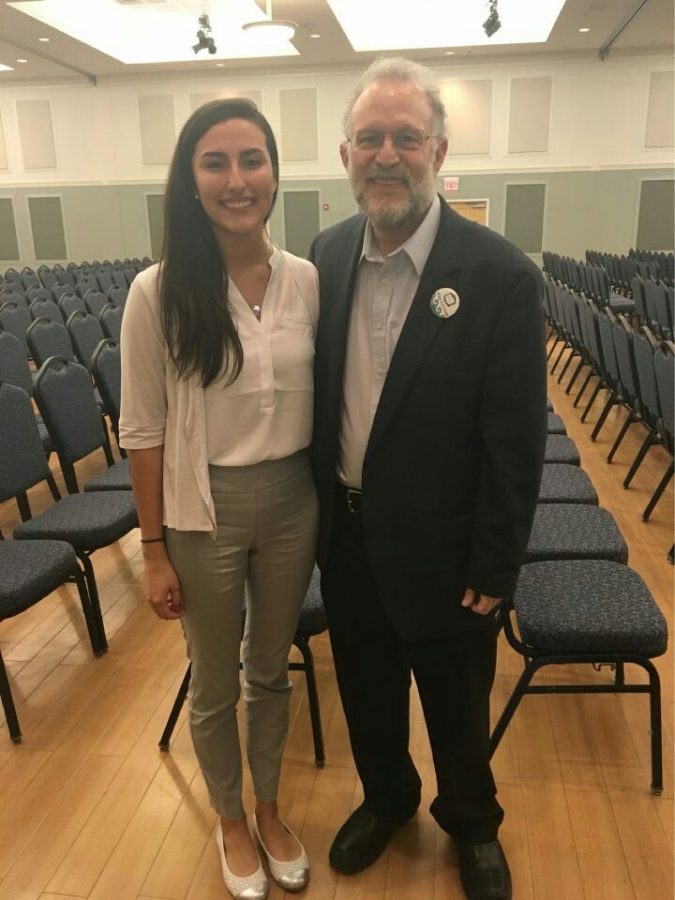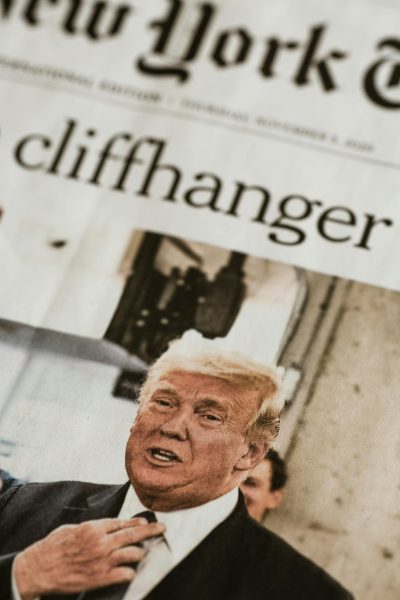Ben and Jerry’s co-founder presents his scoop of wisdom
Students, faculty and staff gathered in Burney Center March 30 for the unique opportunity to hear a presentation by Jerry Greenfield, co-founder of Ben & Jerry’s Homemade Holdings, Inc.
Greenfield, a famously successful businessman and philanthropist, spoke to his large audience about how Ben & Jerry’s, an ice cream manufacturing company famous for its environmentally and socially conscious policies, came to be and why he chose to lead the company to be as philanthropic as it is today.
Greenfield began his presentation by getting straight to the point; he listed the flavors of ice cream he brought and where that ice cream would be after his presentation.
Subsequently, he summarized how his business began: two chubby adolescent boys struggling to run a mile in gym class. A beautiful friendship began out of that struggle, and it later bloomed into a multi-million dollar international company.
Greenfield’s business partner, Ben Cohen, struggled to get his grounding after high school, moving in and out of several universities but never graduating from any. Meanwhile, Greenfield graduated from Oberlin College with the intent of attending medical school. Unfortunately, he was rejected three times.
According to Greenfield, the success of Ben & Jerry’s was born from the failures of Ben Cohen and Jerry Greenfield.
“This is what Ben and I were doing,” said Jerry. “We were essentially failing at everything we were trying to do. We thought, ‘Why don’t we try to get together and try to do something that’s fun, [like] being our own bosses?’”
“We had always liked to eat. And so, we thought we would do something with food. We picked homemade ice cream. Didn’t know anything about it. We learned how to make ice cream from a $5 correspondence course,” said Greenfield.
After the correspondence course was completed and the business partners gained momentum (and lost momentum and gained momentum and lost momentum), the partners came up with a plan to begin their business in the rural college town of Burlington, Vt, but problems began to arise.
Cohen and Greenfield were denied a request for a major loan from the local bank. So, rather than having their original loan plan of $26,000, the duo were able to pull together their savings of about $8,000, in addition to a small $4,000 loan. Despite this financial snafu, they carried on with hopes as high as their budget was low.
Greenfield reminisced on their struggles and perseverance. He said their good attitudes and hard work eventually paid off, and Ben & Jerry’s had its first successful summer. But with the cold winter came the slow season, and they needed new business opportunities.
Ben & Jerry’s ice cream started being sold at local restaurants and convenience stores across the country. With this newfound success came newfound enemies. The company faced a large fight early on with a larger business, Pillsbury Company, but pushed on.
During his time on stage, Greenfield spoke of more than his business beginnings. He talked about the wonderful rewards reaped from a successful business and about the importance of also “giving back.”
With this belief in charitable giving, Ben & Jerry’s established a foundation to which 7.5 percent of their proceeds would go. The Ben & Jerry’s Foundation funded community service projects nationwide.
“Our feeling at the time was that a business is essentially a machine for making money,” said Greenfield. “If we wanted to be as much of a benefit to the community as possible, we should give away as much money as possible.”
With the foundation already funding as many projects as possible, the company realized it would be unable to meet all of the requests it was receiving from various communities.
“There are these tremendous unmet human needs and not nearly enough money to go around to fund them, and we started to wonder what more we could do,” said Greenfield.
And with this thought, Ben & Jerry’s redefined the meaning of business.
“We said that a business is a combination of organized human energy plus money, which equals power,” said Greenfield. “It’s become clear that business is really the most powerful source in our society today.”
And with this power of business, Ben & Jerry’s began more initiatives to help communities across America.
Notably, the company began hiring at-risk youth so that they could have their first jobs. This arrangement provided for a mutually beneficial relationship: the young adults were able to spend their time effectively earning a respectable wage, while the company was still making the money it needed.
During the Q&A session of Greenfield’s presentation, many students vocalized their appreciation for Ben & Jerry’s dedication to not using hormones on their cows and to producing vegan ice cream options.
UNC Wilmington freshman Katie Boyle has been working for her local Ben & Jerry’s ice cream shop in Washington, DC since January 2015. She attended the presentation to show her appreciation for the company.
“I work for a socially conscious and environmentally conscious company, and not many people can say that, so I was happy to be here in support,” said Boyle.
“It’s obvious the people in charge [in the location at which I work] want everyone to get along and have a good time and [get good] work experience,” said Boyle. “It was great to see that this mentality was even present in someone so high up.”











